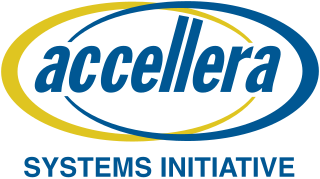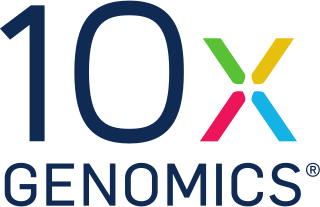
Mentor Graphics Corporation was a US-based electronic design automation (EDA) multinational corporation for electrical engineering and electronics, headquartered in Wilsonville, Oregon. Founded in 1981, the company distributed products that assist in electronic design automation, simulation tools for analog mixed-signal design, VPN solutions, and fluid dynamics and heat transfer tools. The company leveraged Apollo Computer workstations to differentiate itself within the computer-aided engineering (CAE) market with its software and hardware.
Electronic design automation (EDA), also referred to as electronic computer-aided design (ECAD), is a category of software tools for designing electronic systems such as integrated circuits and printed circuit boards. The tools work together in a design flow that chip designers use to design and analyze entire semiconductor chips. Since a modern semiconductor chip can have billions of components, EDA tools are essential for their design; this article in particular describes EDA specifically with respect to integrated circuits (ICs).

Synopsys, Inc. is an American electronic design automation (EDA) company headquartered in Sunnyvale, California, that focuses on silicon design and verification, silicon intellectual property and software security and quality. Synopsys supplies tools and services to the semiconductor design and manufacturing industry. Products include tools for logic synthesis and physical design of integrated circuits, simulators for development, and debugging environments that assist in the design of the logic for chips and computer systems. As of 2023, the company is a component of both the Nasdaq-100 and S&P 500 indices.

Altera Corporation was a manufacturer of programmable logic devices (PLDs) headquartered in San Jose, California. It was founded in 1983 and acquired by Intel in 2015.

Accellera Systems Initiative (Accellera) is a standards organization that supports a mix of user and vendor standards and open interfaces development in the area of electronic design automation (EDA) and integrated circuit (IC) design and manufacturing. It is less constrained than the Institute of Electrical and Electronics Engineers (IEEE) and is therefore the starting place for many standards. Once mature and adopted by the broader community, the standards are usually transferred to the IEEE.
VLSI Technology, Inc., was an American company that designed and manufactured custom and semi-custom integrated circuits (ICs). The company was based in Silicon Valley, with headquarters at 1109 McKay Drive in San Jose. Along with LSI Logic, VLSI Technology defined the leading edge of the application-specific integrated circuit (ASIC) business, which accelerated the push of powerful embedded systems into affordable products.

The Design Automation Conference, or DAC, is an annual event, a combination of a technical conference and a trade show, both specializing in electronic design automation (EDA).
An EDA database is a database specialized for the purpose of electronic design automation. These application specific databases are required because general purpose databases have historically not provided enough performance for EDA applications.
The Si2 Common Power Format, or CPF is a file format for specifying power-saving techniques early in the design process. In the design of integrated circuits, saving power is a primary goal, and designers are forced to use sophisticated techniques such as clock gating, multi-voltage logic, and turning off the power entirely to inactive blocks. These techniques require a consistent implementation in the design steps of logic design, implementation, and verification. For example, if multiple different power supplies are used, then logic synthesis must insert level shifters, place and route must deal with them correctly, and other tools such as static timing analysis and formal verification must understand these components. As power became an increasingly pressing concern, each tool independently added the features needed. Although this made it possible to build low power flows, it was difficult and error prone since the same information needed to be specified several times, in several formats, to many different tools. CPF was created as a common format that many tools can use to specify power-specific data, so that power intent only need be entered once and can be used consistently by all tools. The aim of CPF is to support an automated, power-aware design infrastructure.
Jingsheng Jason Cong is a Chinese-born American computer scientist, educator, and serial entrepreneur. He received his B.S. degree in computer science from Peking University in 1985, his M.S. and Ph. D. degrees in computer science from the University of Illinois at Urbana-Champaign in 1987 and 1990, respectively. He has been on the faculty in the Computer Science Department at the University of California, Los Angeles (UCLA) since 1990. Currently, he is a Distinguished Chancellor’s Professor and the director of Center for Domain-Specific Computing (CDSC).

Cadence Design Systems, Inc., headquartered in San Jose, California, is an American multinational computational software company, founded in 1988 by the merger of SDA Systems and ECAD, Inc. The company produces software, hardware, and silicon structures for designing integrated circuits, systems on chips (SoCs), and printed circuit boards.
SMART Technologies is a Canadian company headquartered in Calgary, Alberta, Canada and wholly owned by Foxconn. Founded in 1987, SMART is best known as the developer of interactive whiteboards branded as the "SMART Board" popularly used in education and business.
AWR Corporation is an electronic design automation (EDA) software company, formerly known as Applied Wave Research, and then acquired by National Instruments
C Level Design was a computer software company based in San Jose, California. It developed a tools to translate from the C programming language to hardware description languages.

NetLogic Microsystems, Inc. was a fabless semiconductor company that developed high performance products for data center, enterprise, wireless and wireline infrastructure networks. The company was founded in 1995 by Norman Godinho and Varad Srinivasan, became a public company on the NASDAQ exchange under the leadership of CEO Ronald Jankov in July 2004 and was acquired by Broadcom Corporation for $3.7 billion in February 2012.

Massoud Pedram is an Iranian American computer engineer noted for his research in green computing, energy storage systems, low-power electronics and design, electronic design automation and quantum computing. In the early 1990s, Pedram pioneered an approach to designing VLSI circuits that considered physical effects during logic synthesis. He named this approach layout-driven logic synthesis, which was subsequently called physical synthesis and incorporated into the standard EDA design flows. Pedram's early work on this subject became a significant prior art reference in a litigation between Synopsys Inc. and Magma Design Automation.
The Marie R. Pistilli Women in Engineering Achievement Award is issued annually since 2000 by the Design Automation Conference (DAC) to honor the outstanding achievements of women in Electronic Design Automation. It is named after the co-founder of DAC, Marie Pistilli. Originally named as the "Marie R. Pistilli Women in EDA Achievement Award", it is named the "Marie R. Pistilli Women in Engineering Achievement Award" since 2016.

10x Genomics, Inc. is an American biotechnology company that designs and manufactures gene sequencing technology used in scientific research. It was founded in 2012 by Serge Saxonov, Ben Hindson, and Kevin Ness.

Anirudh Devgan is an Indian-American computer scientist and CEO. As a scientist, Devgan is known for his contributions to electronic design automation, specifically circuit simulation, physical design and signoff, statistical design and optimization, and verification and hardware platforms. A fellow of the Institute of Electrical and Electronics Engineers, he is also member of the National Academy of Engineering.










